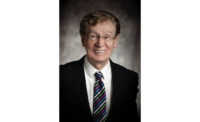It's been five years since the opening of the Getty Center—the Big Kahuna of Richard Meier's career [RECORD, November 1997]. Since the Getty was completed, the eminent architect has found himself working on a number of smaller projects, while still keeping offices in New York and Los Angeles. On the eve of his 40th year with his own practice, architectural record visited Meier to discuss his current work and his thoughts on a number of topics, such as the difference between European and American architecture, the importance of technical innovations, the influence of the computer on design, and the planning for the World Trade Center site. As is well known, after he got his B.Arch. from Cornell in 1957 Meier's career began with houses. He worked for Davis Brody Wisniewski, then Skidmore, Owings & Merrill, and finally, Marcel Breuer before opening his own office. His designs for houses immediately brought him renown, and he became known for his mastery of scale, detail, and simplicity. During his career, Meier has never wavered from his commitment to the Modernist vocabulary, nor succumbed to the vicissitudes of fashion. Instead, he has been able to accomplish a difficult thing for an "established" architect with an expanding practice: maintain rigorously high standards of design. [For accompanying photos please see RECORD, September 2002.]
Architectural Record: Your career took off with the Smith House in New Canaan, Connecticut, in 1965, which was followed by other residential projects, museums, schools, office buildings, and town halls, until finally the Getty Center, finished in late 1997. Where do you go after the "commission of the century"?
Richard Meier: Ironically, right now we're doing a number of small-scale projects. At the time we were working on the Getty, I was doing many other things. I would spend two weeks a month at the Getty and then two weeks working on other projects. When the Getty was completed after 18 years, other work was finished, as well, such as Siemens in Munich (1986). And shortly after the Getty, the federal courthouses in Islip, New York, and Phoenix opened. More recently, we finished the Rickmers Headquarters in Hamburg, Germany, and the Canon Headquarters in Tokyo.
Yet I hadn't thought the Getty would leave as much of a void as in fact it has. The current economic and political situation has slowed things down. Universities seem to be our most active source of work right now; for example, we are designing the new building for the History of Art department and Arts Library at Yale, and a Life Science Technology Building at Cornell University. But the private sector has pulled back the greatest amount in terms of their planning for the future.
Which small-scale projects are of particular interest to you?
We're doing a small, private art museum in Baden-Baden for Frieder Burda—an entrepreneur who has an extraordinary collection of contemporary art. The project, which is in a city park next to the Kunsthalle, is like a big house. Burda is giving the building and the
collection to the city. We're also doing the Peek & Cloppenburg Department Store in Mannheim, Germany, and a bridge in Alessandria, in northern Italy, which did have some problems but is going ahead. In the United States, our L.A. office is adding onto Philip Johnson's Crystal Cathedral in Orange Grove, California, with a Hospitality and Visitors Center. And we are designing some houses––one in Katonah, New York, the other in Santa Barbara, California.
Yet you still design houses. Why? Often architectural offices of a certain size don't want to be bothered.
I enjoy houses––that's why I got involved advising Coco Brown on selecting architects for his Sagaponack development on Long Island. A house goes quickly compared to a public building. And you can do different things with houses, such as explore energy conservation by making use of location, climate, orientation to the site. We've explored the use of glass louvers on the Katonah house to cut down glare.
And, of course, there is the Jubilee Church in Rome, which is not so simple. This series of curved shells has a more plastic expression than much of your previous work. Is this fluidity a design direction on your part?
This church really demanded a different attitude and a different approach. The sanctuary space is composed of three sections of a sphere, which enclose the day chapel, the baptistry, and the atrium, with natural light coming in from above. These curved walls are cantilevered vertically from the ground, with glass all around and between them. Rather than being poured-in-place concrete, they are precast, since it was easier to control the form of the sphere and give the sections the same smooth, white surface inside and out. By the way, we're using the concrete originally developed by Nervi, when he designed the Palazzo and Palazzetto dello Sport stadiums in Rome in the late 1950s.
In the church, each segment of the sphere weighs about 8 tons. The segments were shipped to the site, where a crane moved along a track and installed the pieces, which were then posttensioned. No one's ever erected anything of this scale in terms of a precast assembly system. And I must say, we have extraordinary structural engineers, Italcementi, who worked with us in Italy and figured out how this thing could be manufactured, taken to the site, and erected.
Initially you described a challenging business environment, but intellectually, you're involved with new ideas here. Although the church has been going slowly, doesn't it explore form and material differently from anything you have done?
No one's done it before! With another project, the Performing Arts Center in Bethel, New York, we designed a curved glass roof over a louvered timber ceiling, all supported by a space frame that spans 200 feet. Unfortunately, the project is not going ahead, but the concept, which we worked out with Arup, would have provided an outdoor roofed space sheltering 3,500 people, with additional seating on the lawn for 10,000.

